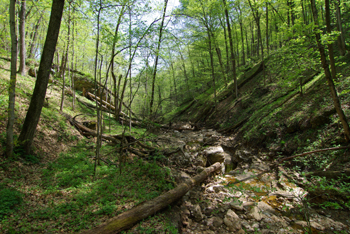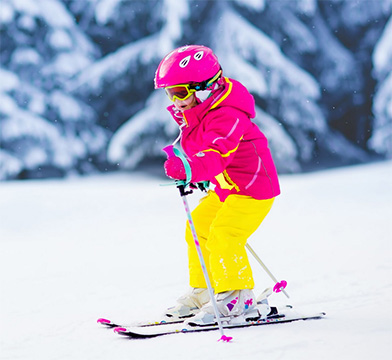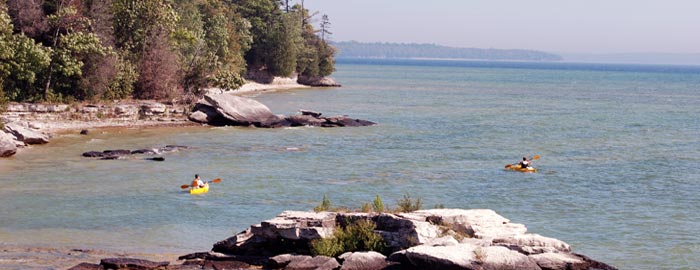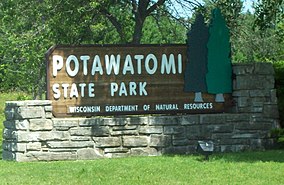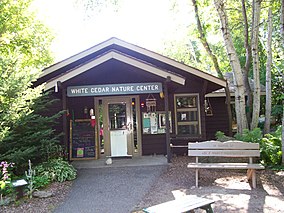All Things to Do
- Ho-Chunk Gaming – Wisconsin Dells is a Native American casino located in the Town of Delton, Wisconsin, between Wisconsin Dells and Baraboo. The casino is owned by the Ho-Chunk Nation of Wisconsin.
- Wyalusing Hardwood Forest occupies the steep sides and top of a ridge just east of the confluence of the Wisconsin and Mississippi Rivers and contains four major southern forest types illustrating John Curtis’ classic concept of a vegetation continuum. The wooded bluffs rise more than 400 feet above the Wisconsin River and provide a variety of exposures over different bedrock types including Prairie du Chien and Platteville-Galena dolomites and St. Peter sandstone. The major soil types, Fayette and Seaton silt loams, developed in loess. The river bottoms have wet-mesic forest dominated by silver maple. Upslope there are areas of mesic, dry-mesic, and dry forest. The ground layer species are equally diverse, changing in composition with a change in microclimate. Nesting birds are characteristic of locations much farther south and include several rare forest interior species. Also present are blue-gray gnatcatcher and tufted titmouse. The forest was dedicated to Dr. John T. Curtis, the first chair of the State Board for the Preservation of Scientific Areas, in May 1966. Wyalusing Hardwood Forest is owned by the DNR and was designated a State Natural Area in 1952.
- High Cliff State Park is the only state-owned recreational area on Lake Winnebago, Wisconsin’s largest lake. The park gets its name from the limestone cliff of the Niagara Escarpment, which parallels the eastern shore of Lake Winnebago. The magnificent 12-foot statue of Winnebago Indian Chief Red Bird, standing high on a huge granite rock, overlooks the lake and is a popular destination in the park.
- Trollhaugen is a ski resort located in Dresser, Wisconsin. The ski area consists of 24 trails, including 3 terrain parks. In addition to offering ski and snowboard opportunities, Trollhaugen offers 10 lanes of snow tubing during the winter, as well as zip lining and a 120 element aerial challenge course in the summer. Trollhaugen offers NASTAR (National Standard Race) events throughout the season. Trollhaugen is notable for their terrain park, rated the 3rd best in the Midwest Region by TransWorld Snowboarding Magazine. Trollhaugen is also known for being open until 3 am on Friday nights in the winter for late night skiing and snowboarding.
- Newport State Park, northeast of Ellison Bay, is Wisconsin’s only formally-designated wilderness park. With 2,373 acres and 11 miles of Lake Michigan shoreline, the park offers quiet alternatives to bustling Door County. Explore 30 miles of hiking trails with hike-in campsites. There are evergreen and hardwood forests, wetlands and upland meadows.
- Built in 1869 and still operational today, Cana Island Lighthouse is a Door County treasure. The Lighthouse is located on an island, just north of Baileys Harbor, Wisconsin, which visitors reach by walking across the dry lake bottom. Once on the island, you can climb the light tower, tour the lighthouse keeper’s home and explore the grounds, which include relics from the 1900s. Climbing the 97 steps of the light tower to access the outside gallery deck gives you a breath-taking view of the island, the Door County peninsula and Lake Michigan.
- When Captain Frederick and Maria Pabst began construction of their new family mansion in June 1890, they could not have anticipated that it would survive and thrive into the twenty-first century as a testament to America’s Gilded Age. Designed by George Bowman Ferry and Alfred Charles Clas, construction at 2000 Grand Avenue lasted for two years and was completed in July of 1892 at a cost of just over $254,000 — including the house, furnishings and artwork. As leading figures in Milwaukee society, both Captain and Mrs. Pabst became consummate art collectors, filling their mansion with priceless treasures. During the years of the Pabst family’s ownership, the house was the scene of many fine parties and receptions, a wedding and, in the end, Captain and Mrs. Pabst’s funeral. After the Pabst descendants sold the house in 1908, it became the archbishop’s residence and the center of the Roman Catholic Archdiocese of Milwaukee for more than sixty-seven years. When it was sold in 1975, the mansion was nearly torn down to make way for a parking lot for a neighboring hotel. After a three-year crusade for its preservation, it was spared demolition and went on to become an award-winning house museum. The Mansion was placed on the National Register of Historic Places on April 21, 1975. Open to the public since 1978, revenues for the Pabst Mansion’s continued success and ongoing restoration are garnered from admissions, sales, events, grants, donations and memberships. As the years have come and gone, The Pabst Mansion has remained a constant on Milwaukee’s landscape. Surviving papers and photographs detailing the life of this house give us an unusually full view of the life of the Pabst. It is simply an organized pile of bricks, wood and terra cotta and yet the Pabst Mansion has always had a life of its own. The world around it continues to change, but the Pabst Mansion will serve as an active participant that represents the best of the 19th century in the 21st.
- Potawatomi State Park is a 1,225-acre (496 ha) Wisconsin state park northwest of the city of Sturgeon Bay, Wisconsin in the Town of Nasewaupee. It is located on Sturgeon Bay, a bay of the Bay of Green Bay in Door County. Potawatomi State Park was established in 1928. Activities and amenitiesTrails: The park has several hiking trails and is the eastern terminus of the Ice Age National Scenic Trail. Park trails are used for hiking, bicycling, cross-country, and snowmobiling. Green Bay: The park has two miles of water frontage on Green Bay which provides opportunities for boating, canoeing, and fishing.
- Cave Point County Park featuring underwater caves, hiking trails & limestone cliffs along scenic Lake Michigan.
- Peninsula State Park is a 3,776-acre (1,528 ha) Wisconsin state park with eight miles (13 km) of Green Bay shoreline in Door County. Peninsula is the third largest state park in Wisconsin and is visited by an estimated one million visitors annually. Considered Wisconsin’s most complete park, Peninsula has 468 campsites, three group camps, a summer theater, an 18-hole golf course, sand beach, biking, hiking and ski trails, 150-foot bluffs, a lighthouse and eight miles of Door County shoreline. The park is open year-round but some features may not be accessible outside the peak season.Eagle Bluff Light White Cedar Nature Center Eagle Tower American Folklore Theatre Horseshoe Island Sunset Bike Trail Peninsula Golf Course


